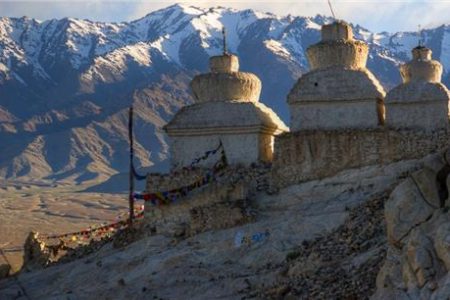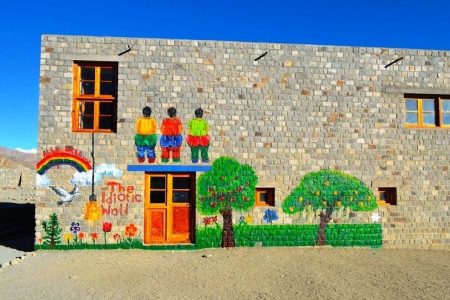Conclusion
Shey Monastery is not just a place of worship; it is a testament to the enduring spiritual heritage of Ladakh’s high-altitude borderlands.
Situated approximately 15 kilometers southeast of Leh, Shey Monastery, also known as Shey Palace and Gompa, was established in 1655 by King Deldan Namgyal in memory of his father, Sengge Namgyal. The monastery houses a remarkable 12-meter-high gilded copper statue of Shakyamuni Buddha, which is the second-largest of its kind in Ladakh. This statue, crafted by Nepalese artisans, occupies three floors of the monastery and is surrounded by intricate murals and images of the 16 Arhats, as well as Buddha’s chief disciples, Sariputra and Maudgalyayana.
Perched atop a hillock, Shey Monastery offers panoramic views of the Indus Valley and the surrounding Himalayan ranges. The complex includes the ruins of the original 10th-century palace built by Lhachen Palgyigon, the founder of the Kingdom of Maryul. The site is adorned with numerous chortens and mani walls, reflecting its historical significance as the former summer capital of Ladakh.
For devotees, Shey Monastery provides a sacred space to connect with Buddhist teachings. For historians and art enthusiasts, it offers a glimpse into the region’s rich Buddhist heritage. And for travelers seeking peace, the silence and sanctity of Shey Monastery speak volumes.
Whether you’re a seeker of faith or beauty, Shey Monastery promises to touch your soul and stay etched in your Ladakhi memories forever.




